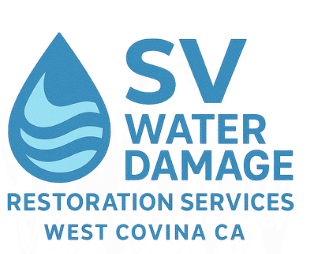Every homeowner or facility manager dreads the sight of little black or green spots creeping along walls. But mold isn’t just unsightly — it can threaten indoor air quality, damage structure, and lead to costly repairs if left unchecked. That’s why knowing when and why to call in mold remediation professionals is critical.
In this article, we’ll cover:
- Signs mold has become more than a surface issue
- Why DIY efforts often fall short
- How mold remediation protects health and property
- What to expect when you engage a mold remediation provider (e.g. SV Restoration)
- What to do next (linking into related topics)
How to Spot When Mold Has Crossed the Line
Sometimes mold starts small — you see a speck in a corner, or notice a faint musty smell. But when does it cross the threshold into a serious issue? Watch for:
- Widespread visible growth: mold covering large surfaces, ceilings, or multiple rooms
- Recurring mold spots: despite your cleaning, mold returns in same zones
- Persistent dampness or leaks: areas that stay moist or have had water damage
- Health symptoms: occupants showing unexplained respiratory irritation or allergies
- Structural damage: warped wood, peeling paint, soft drywall, crumbling plaster
If you see any of these signs, it’s time to seriously consider mold remediation services, rather than simple cleaning.
Why DIY Mold Removal Often Falls Short
You might be tempted to grab bleach and scrub that moldy patch, or spray over the discoloration and call it done. But mold remediation is more than surface cleaning — professionals focus on:
- Containment and limiting cross-contamination
- Identifying hidden moisture sources
- Removing or treating infested materials properly
- Using HEPA filtration and negative pressure to capture spores
- Performing a post-remediation assessment to confirm success
DIY or partial fixes might temporarily mask the problem, but mold spores are pervasive. Without containment and follow-through, spores may spread to untouched areas or re-colonize. That’s why many building owners opt instead for full mold remediation engagement. (For an overview of how a full remediation project works, see our post “Step-by-Step Mold Remediation Process” below.)
Benefits of Professional Mold Remediation
Why pay for remediation when you could try patching the issue yourself? Here are the compelling advantages:
| Benefit | What It Means for You |
|---|---|
| Better health outcomes | Reduces the airborne spore load and allergen levels, improving indoor air quality |
| Thorough coverage | Professionals find hidden mold behind walls, inside HVAC, under flooring |
| Reduced recurrence risk | They address moisture sources and control humidity to prevent return |
| Less disruption | A systematic remediation is often faster and less invasive than repeated DIY attempts |
| Peace of mind | You know that the area has been cleaned, isolated, and cleared for occupancy |
Because mold spreads rapidly (often within 24–48 hours of moisture intrusion), delaying remediation can magnify cost and damage.
What Happens During a Mold Remediation Project
If you decide to engage mold remediation services such as those offered by SV Restoration, this is the typical flow:
1. Initial inspection & assessment
Technicians locate visible mold, use moisture meters and thermal imaging to find hidden damp spots, test air and surfaces, and determine the full extent of contamination.
2. Containment & isolation
The work zone is sealed off using plastic sheeting, negative pressure systems are applied, and unaffected areas are protected.
3. Removal & remediation
Infested materials (drywall, insulation, carpeting) may be removed; salvageable surfaces are cleaned using antimicrobial solutions. HEPA vacuums and air scrubbers help suppress spore spread.
4. Drying & humidity control
Dehumidifiers, fans, and HVAC interventions restore moisture levels to safe thresholds. Without this, the remediation may fail.
5. Clearance testing
After remediation, area is re-tested (airborne spores, moisture levels). Only when results are acceptable is the zone cleared for reoccupation.
6. Rebuilding and repair
If structural elements were removed, restoration phases (drywall, paint, finishes) resume.
Each of these steps is integral — skipping or rushing any phase risks recurrence or incomplete remediation.
How This Blog Links to Others
- For a detailed breakdown of remediation methodologies and best practices, see Blog 2: Step-by-Step Mold Remediation Process.
- If you’re wondering how to prevent mold recurrence long term, check Blog 3: Mold Prevention & Maintenance Post-Remediation.
- We also encourage you to review our mold remediation services page for more about our approach, and when ready you can reach out via our contact page.
When to Call SV Restoration for Mold Remediation
When the fungus problem is beyond your control, calling a remediation specialist ensures:
- The integrity of your building is protected
- Indoor air quality is improved
- You avoid repeated cycle of damage and repair
- You get expert support across inspection, remediation, and restoration
Whether it’s a residential crawlspace or a commercial ceiling soffit, SV Restoration is equipped to handle mold projects of varying scale. If you’re ready to explore your options, start by visiting our mold remediation service page or contacting us directly.
Final Thoughts
Mold is deceptive — it often hides behind surfaces, thrives on unseen moisture, and spreads faster than many expect. Recognizing when it’s time to call in professionals is a key step in protecting your health and property. In the next blog, we’ll walk you through the exact steps remediation teams follow, so you know exactly what to expect when you call in help.



